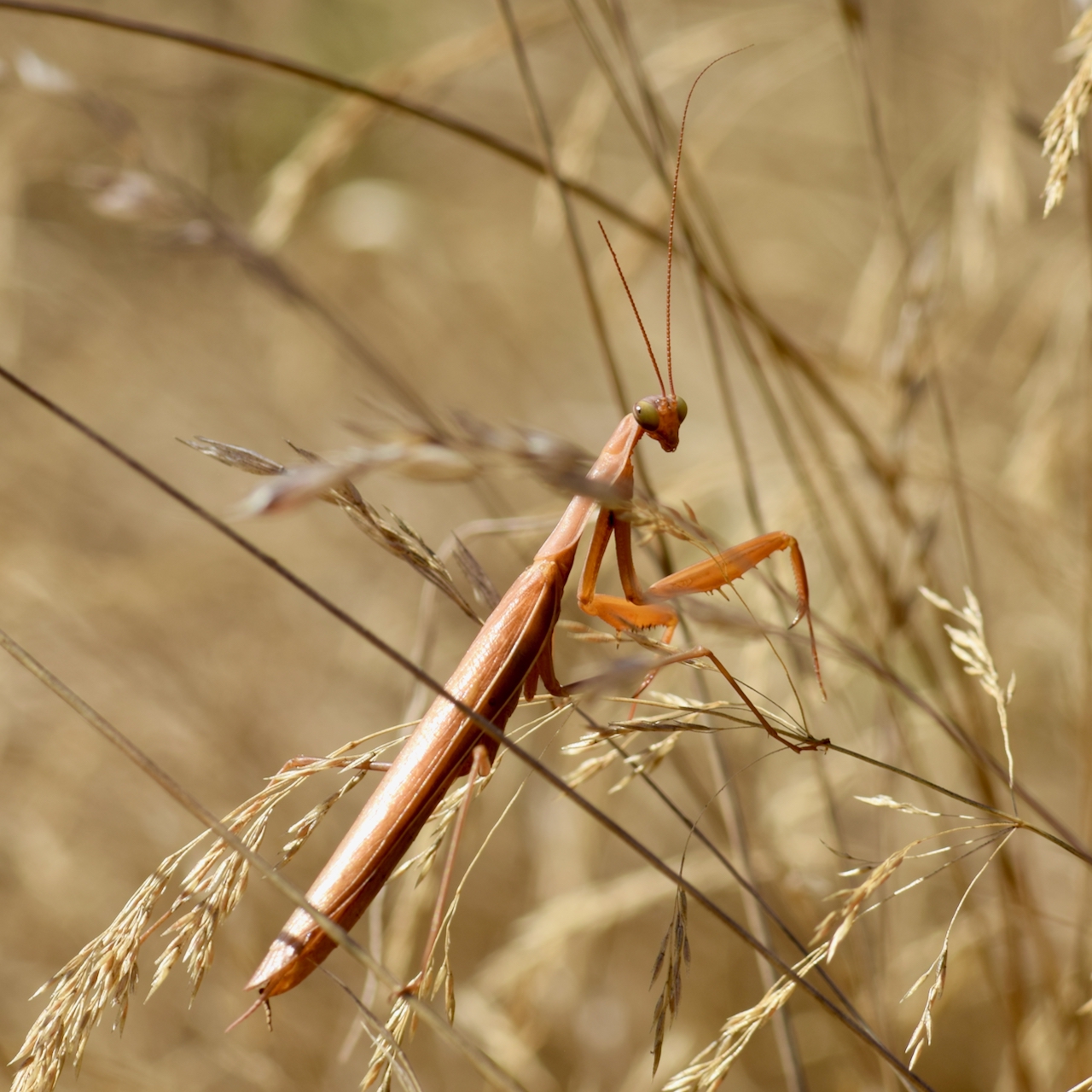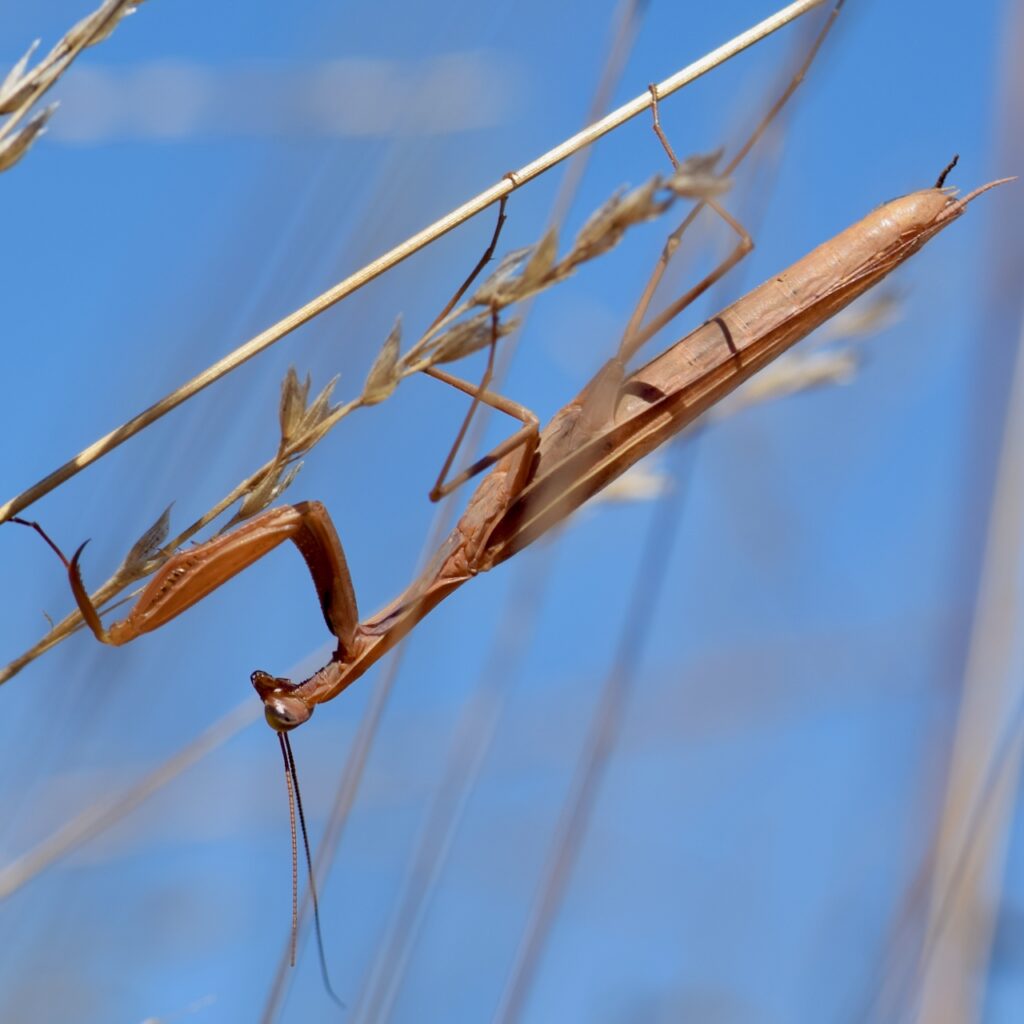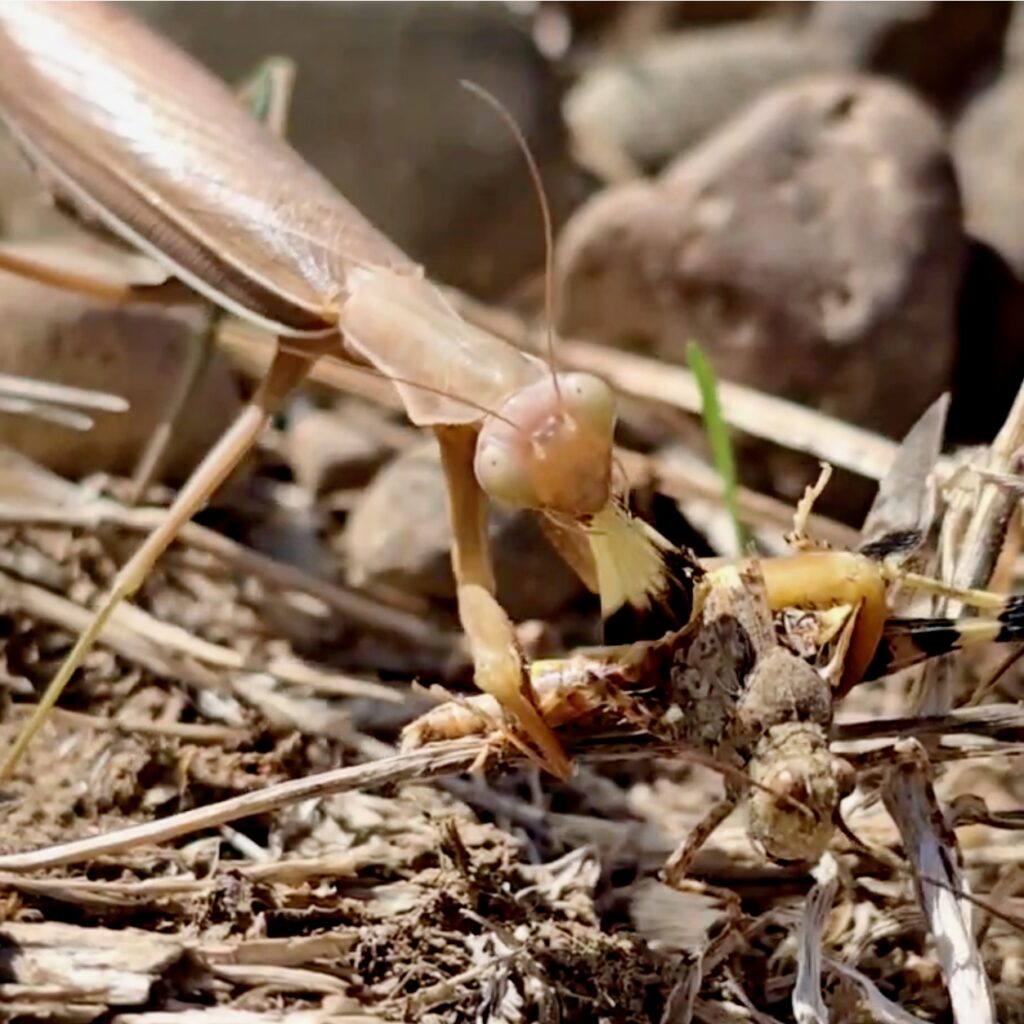Put your hands together for the praying mantis!
Early fall is a great time to look for these large (for an insect) predators.
There’s just one praying mantis species in Western Oregon, and it’s not originally from these parts. The European Mantis, or Mantis religiosa, came to the U.S. via New York at the very end of the 1800s. They probably saluted their formidable front legs and the captain welcomed them on board the overseas vessel.

M. religiosa can be various shades of green or brown, sometimes with pink or yellow tones in the mix. Researchers agree that they don’t change color quickly, like a chameleon, to match their surroundings, but they do morph from one shade to another when they molt.
But this year, one study confirmed that European Mantises can and do change colors in their adult stage. It turns out they’re more tuned in to the weather than to the hue of their habitat.
Later in the season, the paper says, there are more green than brown mantises. The insects respond to increased humidity and lower temperatures by becoming more green. As a result, they blend in better with the landscape as it greens up after the warm, dry late summer weather. The mantises seen at Mount Pisgah recently (in my sampling of two) continue to prefer brown.


Both male and female Mantis religiosa have eye spots under their arms. When they’re threatened, they sometimes raise their front arms and frill out both sets of wings. The eye spots likely confuse birds and other predators. There’s a photo of this behavior linked below, and the author says the mantis “rattled its tail” as well.
Stay curious!
See more of Karen’s work here.
Sources:
2025 research paper on color change in European Mantises: https://www.researchgate.net/publication/233852079_Colour_change_and_habitat_preferences_in_Mantis_religiosa. Accessed 9/26/25.
Mantis in defensive pose: https://bugguide.net/node/view/1272202. Accessed 9/26/25.
All photos by Karen Richards.